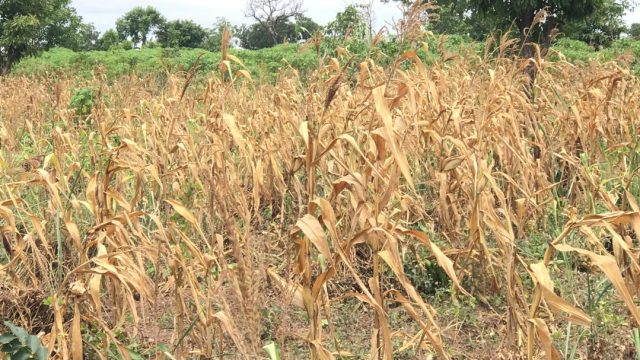- Grains Council advocates sustainable agric practices
By Wisdom JONNY-NUEKPE
Data from the Ghana Grains Council (GGC) indicate that dry spells and drought conditions have affected 1.8 million hectares of agricultural land in the country, resulting in crop revenue losses amounting to some GH¢22.2billion in 2023 and 2024.
The Council noted that the Northern and Savannah Regions – which are responsible for a significant portion of the country’s maize, millet, sorghum and rice – were hit the hardest.
According to GGC, maize yields fell by 35 percent and rice production by 25 percent, with millet and sorghum yields dropping by some 20 percent this year.
The Council’s Executive Secretary, Emily Boahen – who was addressing stakeholders at the Ghana Grains Forum in Accra on Tuesday, said grains, particularly maize, have become essential to the country’s economy and their cultivation must be prioritised.
She said this commodity alone accounted for half of the country’s total cereal production, with over two million smallholder farmers depending on corn for their livelihoods.
Despite opportunities, the grain sector, according to Madam Boahen, faces several challenges – including low productivity, inconsistent access to inputs for farmers, exposure to global market fluctuations and climate variability, among others.
Addressing these challenges, GGC noted that it’s critical to ensure the grains sector continues contributing positively to Ghana’s economic growth and food security.
Apart from climate change and drought conditions which are banes of the grain production sector, GGC also confirmed that galamsey, post-harvest losses and market access remain key challenges.
With the country losing approximately 1.46 million hectares of tree cover in the last two decades – much of it due to mining activities and environmental degradation, the Council maintains these activities have degraded large tracts of arable land and polluted water-bodies…. which has further exacerbated challenges faced by farmers.
Equally, postharvest losses in the grain industry remains alarmingly high, with estimates suggesting that 30-40 percent of grains are lost annually due to inadequate storage, transportation and processing facilities.
These losses, the Council explained, reduce the profitability of farming for smallholders and contribute to food insecurity.
But Madam Boahen said investment in rural infrastructure, including roads, storage facilities and market platforms, are key to reducing the losses and improving access to markets.
She said other complex challenges which must be addressed include expanding access to finance for farmers, strengthening regional collaborations, enhancing research and development among others.
About the Ghana Grains Forum
Under the theme ‘Climate Change and Sustainable Food Security: Collaborative Responses to Ghana’s Grain Crisis’, the Forum was hosted to give stakeholders a platform for discussing multiple challenges which have overwhelmed the sector.
A panel comprising seasoned agriculturalists and farmers, including first female Dean-School of Agriculture, University of Ghana, Prof. Irene Susana Egyir; Agriculturalist, Prof Abu Sakara; and CEO-Agri Impact, Mr. Daniel Fahene Acquaye among others.
At the Forum, the experts advised stakeholders to prioritise and display commitment to sustainable farming practices in order to enhance resilient food systems.
Stakeholders also admitted that the droughts have threatened to wipe out billions of cedis invested; and the ban on grain exports, though necessary, has a tendency to challenge local grain producers’ competitiveness.


















